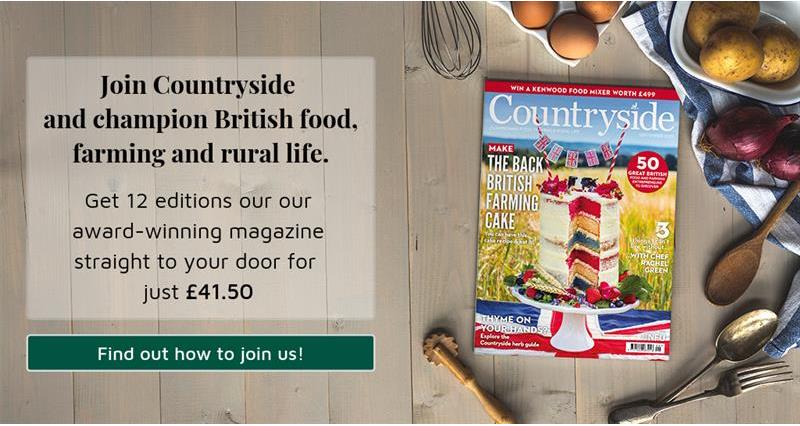In celebration of Wool Week, Kate Chapman has been chatting to some of the marvellous makers utilising the natural qualities of wool in their products.
Choose British wool and do your bit for the environment
- Wool is 100% natural, not manmade.
- Sheep produce a new fleece every year, making wool a renewable fibre source.
- Wool is biodegradable and takes a very short amount of time to break down in comparison to most synthetic materials which degrade much more slowly.
- Wool is a natural insulator and can help to reduce carbon emissions when used in the home.
You'll find more great reasons to choose wool at http://www.campaignforwool.org
Exmoor Horn
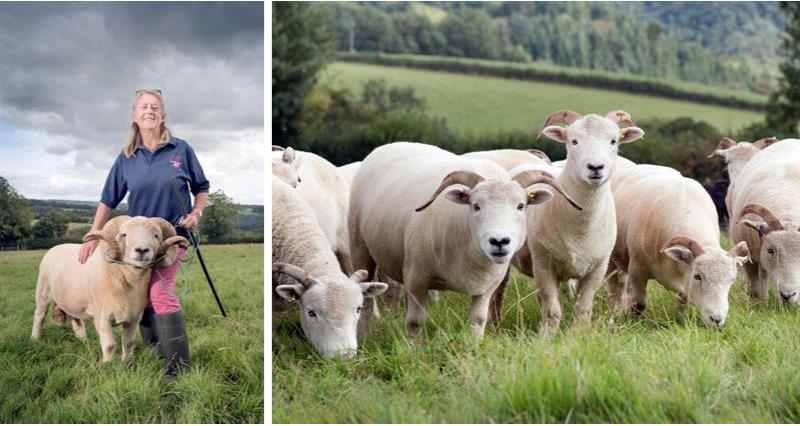
Keen to promote their own breed more widely – and encourage more people to support the British wool industry – the Exmoor Horn Sheep Breeder’s Society has launched a unique project to add value to their fleeces.
It took a couple of years to get off the ground, but Exmoor Horn Wool is thriving; society members are using the graded fleece from their own flocks to create a stunning range of shooting socks, pullovers and knitting wool in a variety of earthy colours and tones to reflect west Somerset and north Devon.
“We wanted a better, more productive use for our fleeces, and we wanted it to be more profitable, as well as getting the name more widely known,” explains company secretary and project leader Lindy Head, who keeps 100 Exmoor Horns on her own farm in south Exmoor.
“Exmoor Horn Sheep are bolshy – they are hardy, they are survivors, but they have to be; they’re out on the moors whatever the weather and the terrain is poor. Around 94 per cent of the national flock is within a 15-mile radius of the middle of Exmoor; they are not rare, but they are vulnerable because of our geographic isolation.
“And that’s why it’s important to let more people know about them – they might have somewhere suitable to keep them too, which helps their continued survival.”
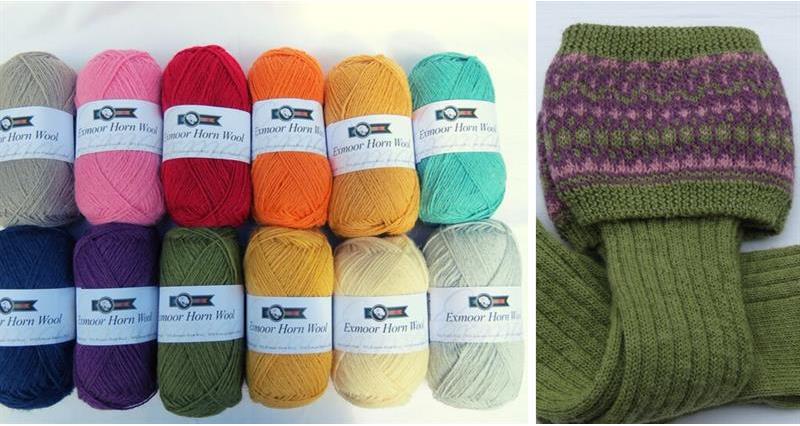
Lindy says the wool from the Exmoor Horn is springy, which is why it was felt to be suitable for alternative use rather than just products such as carpets. Each item the society makes has its own yarn specifications, although all are blended – 70 per cent Exmoor Horn and 30 per cent Blue Face Leicester cross – to give them a slightly better handle.
The fleeces are processed and spun in the UK and the finished items are sold online and at events around the country including Yarndale in Skipton, WonderWool in Wales, and Woolfest in Cockermouth, as well as local shows.
“There’s long been an argument surrounding whether British wool is better than synthetic materials – we just need to convince the mass market,” says Lindy. “The matter has recently become more prominent, due to people like David Attenborough raising the issue of microfibres and everything else polluting the seas.
“Wool is sustainable, people are slowly taking it on board – we’ve got to show that while initially dearer, ultimately quality is actually cheaper, since it lasts.
“A huge challenge facing us is throwaway fashion, but there are designers out there championing natural fibres. Wool is so versatile, and just wonderful, and we find that when we go out to events and take our animals people really do want to listen, learn, and find out more about them and what we do.”
Find out more: Visit exmoorhornwool.co.uk
Did you know...
- Sheep shearing (removing the wool) must take place for the health and hygiene of the animals.
- Most sheep are unable to shed their coat, risking overheating and potential death in hot climates. Therefore shearing is generally carried out in the spring so that sheep don't overheat in the summer.
- Shearing also prevents the fleece from dragging along the ground in the dirt, therefore preventing infection.
- The process is pain free; it is similar to a man having a haircut at the barbers. We musn't forget that sheep are live animals and prone to wriggling, so there is the odd occasion where the farmer accidentally cuts the sheep, but this is always cleaned up quickly to make sure the sheep is comfortable and free from infections.
Two jumpers - what's the difference?
Little Grey Sheep
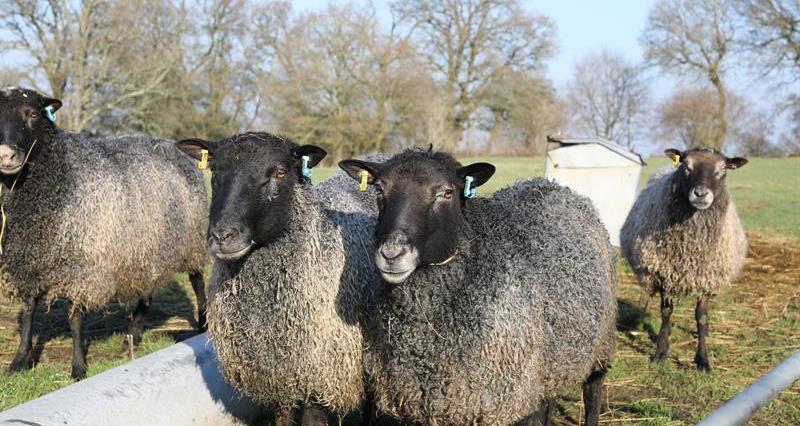
With a passion for textiles and colour, it was only a matter of time before Emma Boyles found a way of introducing sheep back to the arable farm her family bought in 2004. Since then she has worked tirelessly to build up a 650-strong flock of pedigree Gotland, Shetland and Merino sheep on the conservation meadows around Manor Farm, near Winchester, in Hampshire.
From there, she’s developed her own range of luxury 100 per cent wool yarns for knitting, weaving and crochet in a variety of 24 muted tones, which sell online and in shops all over the world.
“I believed we could produce a world class British yarn, that was soft enough to be worn next to the skin, but that had its own unique character. Our own fine wool flocks now inhabit the fields which had for many years seen only wheat and oilseed rape, bringing with them the insect and bird life that thrives around livestock.”
Emma has cross-bred to develop her own breed and says the appeal of her products is the control she has over their production and the story they tell.
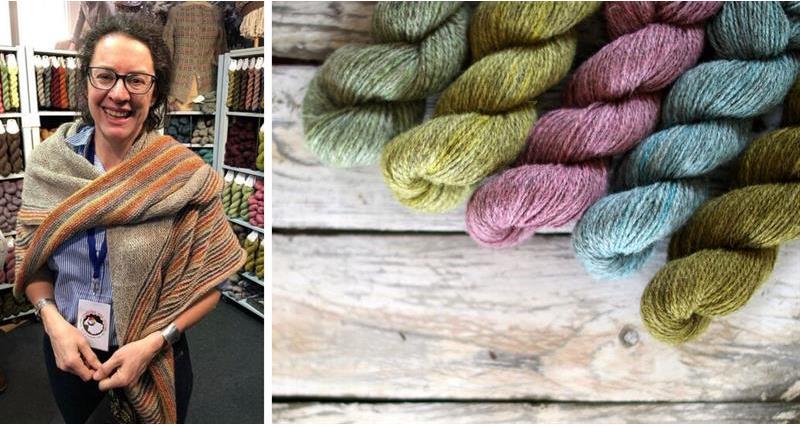
As well as herself and husband Neil, the Little Grey Sheep team also includes shepherdess Susie who shears the fibre, which is washed in Yorkshire and spun in Devon before returning home.
“What people really like is the fact that we are controlling the quality from start to finish.
“We farm for fibre, everything we do is aimed at producing the best quality fleece and yarn,” she adds.
“Some people can be very dismissive but knitting and crochet is a massive industry – in the States alone it’s a £2.9billion market, there’s not been a study done in the UK, but in Germany it accounts for £300m.
“As we’re more aware of the provenance of our food, we’re becoming more aware of the provenance of our clothing and other items too. The yarns we produce can make something that will last for years.”
The marketing of wool is an important tool and Emma credits events such as Wool Week with helping to raise its profile.
“Brexit is hugely concerning for us, as 50 per cent of our sales come from overseas,” she adds.
“As a small business we don’t know what’s going to happen and speaking to some of our customers abroad we’re hearing how it’s going to impact on their jobs too.
“We want to continue to expand and keep putting back into the farm.”
Find out more: Visit thelittlegreysheep.co.uk
Thermafleece
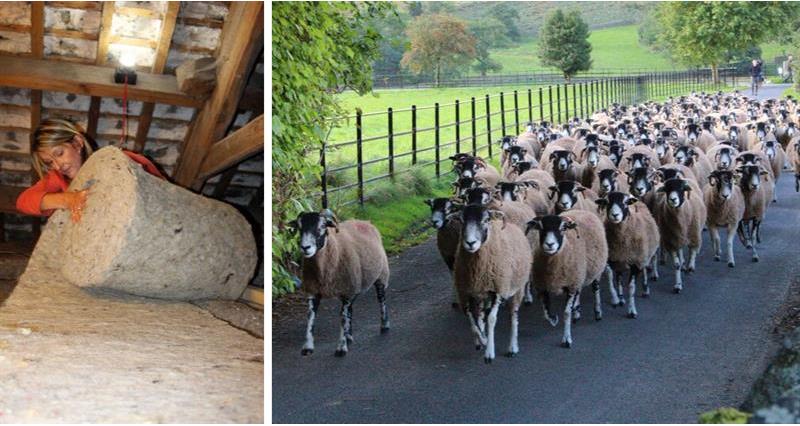
A wish to source a breathable insulation material for a period farmhouse led a Cumbrian farmer’s daughter Christine Armstrong to create the first British sheep’s wool insulation.
Launched in 2001, Thermafleece is made from the fleece of hardy fell breeds whose wool would otherwise have gone to waste.
Thermafleece CosyWool contains 75 per cent wool combined with recycled fibres to hold it together and give a better thermal value, with all wool purchased via the British Wool Marketing Board.
CosyWool is available in roles and slabs and there’s also a higher density alternative, UltraWool, for when space is at a premium. The insulation is incredibly versatile, non-itchy, easy to install – as demonstrated by Alison Forman, pictured, and can be used in the loft, roof, walls and in between floors.
“Wool is an ideal insulator because it’s a breathable, natural fibre that absorbs moisture which all helps improve the health of a building and its occupants. It has great acoustic qualities, is durable and long lasting too, which means it will last a building’s lifetime,” says Joy Batey, marketing manager for makers Eden Renewable Innovations.
The company’s range has also grown to embrace a variety of natural fibres including British hemp and also SupaSoft Loft Insulation made from recycled plastic bottles.
Find out more: Visit thermafleece.com
Merlins Hill wool

The unusual colouring of the Jacob sheep has provided the Richards family with the inspiration to create an exquisite collection of fabrics from their flock’s undyed wool.
Sharon, husband Gareth and their children Carwyn and Carys keep 100 breeding ewes at Alltyfyrddin Farm, in Abergwili, Carmarthenshire, and use their wool in its purest form to create blankets, throws, knee rugs and scarves as well as accessories including cushions, coasters and placemats.
Once shorn and sorted by colour, the family takes the fleeces to a nearby mill, where they are cleaned and spun before being woven into fabric. The bigger items are made at the mill while the family adds their 100 per cent Merlin’s Hill Wool labels and create the accessories at home.
“The wool is coloured and spotted, not just all black or grey, and this inspired us to create a wool collection; we wouldn’t have got anything for it otherwise. Every stage of the process happens here in Wales, mainly Carmarthenshire, and we can tell customers all they want to know about our sheep, their lives and how truly traceable their garment is,” says Sharon, who also runs a farm B&B as well as the Merlin’s Hill Centre, a museum including an Iron Age hillfort site where Merlin the wizard is still said to be trapped.
“Jacob sheep are a minority breed and their heritage ties in well with everything else we’re doing here.”
The family, who also keep 80 Holstein cows, mainly sells its collection at the farm where it is popular with guests and also online and at the Builth Wells winter fair.
Find out more: Visit merlinshillwool.com
